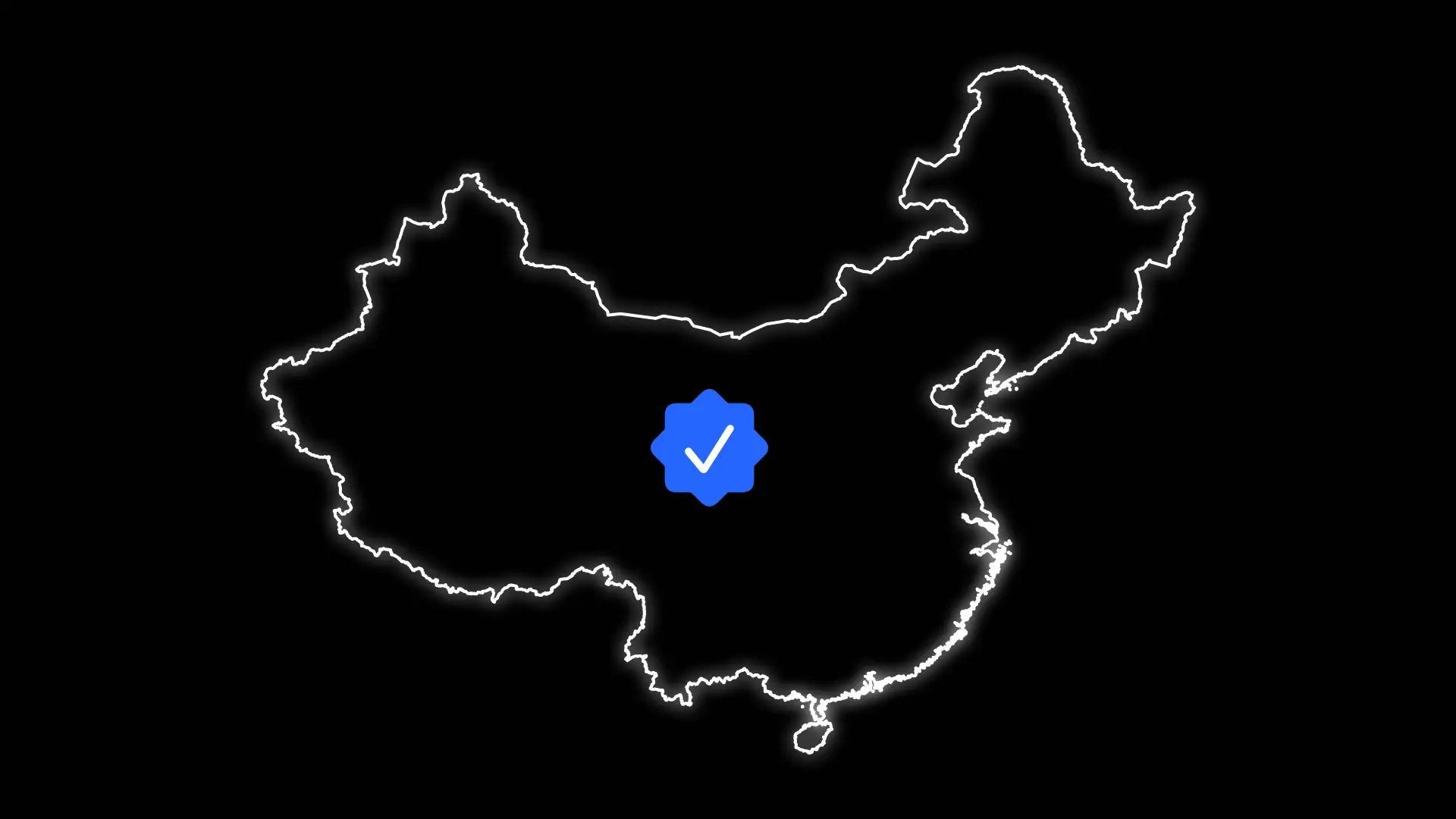
Identity Verification, KYC, and AML Compliance in China
Key Takeaways
China is implementing a new Anti-Money Laundering Law in 2025 that will revolutionize identity verification processes, requiring financial and tech companies to adopt more sophisticated AI-based compliance systems.
The document verification ecosystem in China presents unique challenges: documents with multiple layers of security, regional variability, and complex government requirements that demand cutting-edge technological solutions.
KYC service providers must develop systems capable of interpreting Mandarin documents, validating NFC chips, recognizing biometric patterns, and simultaneously cross-referencing information in government databases.
The digital transformation of financial compliance in China requires platforms that integrate document verification, advanced facial recognition, and real-time AML screening, adapting to a constantly evolving regulatory framework.
China is undergoing a profound regulatory metamorphosis in KYC and AML compliance that will redefine normative standards across Asia. The imminent implementation of the new Anti-Money Laundering Law of the People's Republic of China on January 1, 2025, marks an unprecedented turning point in the international financial compliance strategy of the world's second-largest economy. In this revolution, KYC processes will play a key role in preventing financial crimes.
This regulatory transformation responds to a complex reality: China needs to modernize its financial control mechanisms to align with international AML compliance standards, protect its expanding digital economy, and prevent national security risks. The new regulatory framework will affect traditional financial institutions, fintechs, digital services, and any entity operating within China's financial ecosystem.
The evolution of KYC and AML compliance in China reflects a global trend: the convergence of technology, security, and financial regulation. The new legal provisions establish a more sophisticated identity verification and anti-money laundering model, integrating artificial intelligence, data analysis, and advanced security protocols for regulatory compliance.

The Legal Framework of KYC and AML in China: Evolution of Financial Compliance Requirements
The regulatory landscape of KYC and AML compliance in China represents a constantly evolving normative ecosystem, designed to strengthen the integrity of the financial system and prevent transnational criminal activities. China's legal architecture in identity verification and anti-money laundering has been strategically developed, responding to global challenges and the rapid digitalization of financial services.
The complexity of the Chinese regulatory framework demands a deep understanding of its multiple normative layers, where each regulation constitutes a fundamental gear in the mechanism of international financial compliance. Chinese authorities have built a control system that not only seeks to meet global standards but also to protect national economic security through increasingly sophisticated identity verification mechanisms.
Anti-Money Laundering Law: Cornerstone of Financial Compliance in China
The Anti-Money Laundering Law, originally enacted in 2007 and recently amended in 2024 (to take effect on January 1, 2025), represents the core of China's AML compliance system. This regulation establishes the fundamental principles for detecting, preventing, and sanctioning money laundering activities, defining a comprehensive framework that obliges financial institutions, payment service companies, and digital platforms to implement rigorous identity verification protocols.
The revised version of the law that takes effect in 2025 introduces substantial modifications that significantly expand its scope. For the first time, explicit regulations are included for digital financial services, crypto assets, and technological platforms, recognizing the evolution of the global financial ecosystem. Institutions must implement AI-based identity verification systems that ensure the traceability and authenticity of each transaction.
Data Protection Regulations: Safeguarding Regulatory Compliance
The Personal Data Protection Law, enacted in 2021, becomes an essential complement to KYC processes in China. This regulation sets strict limits on the handling of personal information, forcing companies to develop compliance mechanisms that protect user privacy while meeting identity verification requirements.
The regulation defines specific criteria on user consent, data minimization, and international data transfers, directly impacting how companies implement their know-your-customer (KYC) and anti-money laundering (AML) protocols.
People's Bank of China Regulations: Financial Compliance Guidelines
The guidelines issued by the People's Bank of China (PBOC) complement the legal framework by establishing technical procedures for the effective implementation of anti-money laundering compliance protocols. These regulations detail specific requirements for customer identification, risk assessment, and continuous transaction monitoring.
The new provisions place special emphasis on the use of advanced technologies for identity verification, recognizing the fundamental role of artificial intelligence and data analysis in the early detection of suspicious patterns.
Identity Verification in China: A Strategic Challenge for Financial Compliance
Identity verification in China emerges as one of the most complex and strategic processes for international companies seeking to operate in the financial ecosystem of the Asian giant. The particularities of China's identification system represent a real challenge for KYC and regulatory compliance service providers, requiring advanced technological solutions and a deep understanding of local regulations.
China's identification system is characterized by sophisticated bureaucracy and multiple layers of validation that go beyond the simple presentation of documentation. On the path to regulatory compliance, companies must navigate a regulatory labyrinth where identity verification is the first step: companies must understand intricate mechanisms of governmental control, personal data protection, and fraud prevention.
The Resident Identity Card, known as Shenfenzheng, becomes the fundamental document, but its verification requires a technological ecosystem capable of interpreting Chinese characters, validating security holograms, and cross-referencing information in multiple governmental databases. This process demands significant investments in compliance AI technology and teams specialized in Chinese financial regulation.
Challenges in Verifying Chinese Documents
Document verification in China represents a regulatory labyrinth that tests the technological and compliance capabilities of any financial service provider. Providers of KYC and AML in China face a documentary ecosystem characterized by its complexity, diversity, and constant technological evolution, where each document becomes a unique verification challenge.
Chinese documentary heterogeneity surpasses international standards, with formats that vary according to regions, document types, and citizen categories. This diversity implies that financial compliance systems must develop extremely sophisticated artificial intelligence algorithms, capable of interpreting multiple documentary variants with millimetric precision.
Key Identification Documents: Anatomy of Verification in China
China's identification system is structured around three fundamental documents for identity verification processes: the National Identity Card, the Passport, and the Residence Permit. Each represents its own universe of technical and regulatory complexities.
The National Identity Card, known as Shenfenzheng, is configured as the master document, with a standardized plastic card design that incorporates advanced security measures. It features an integrated NFC chip that stores the holder's biometric information, including facial data and fingerprints. Its dimensions are rigorously standardized: 85.6 mm x 54 mm, following international ISO/IEC standards (International Electrotechnical Commission).
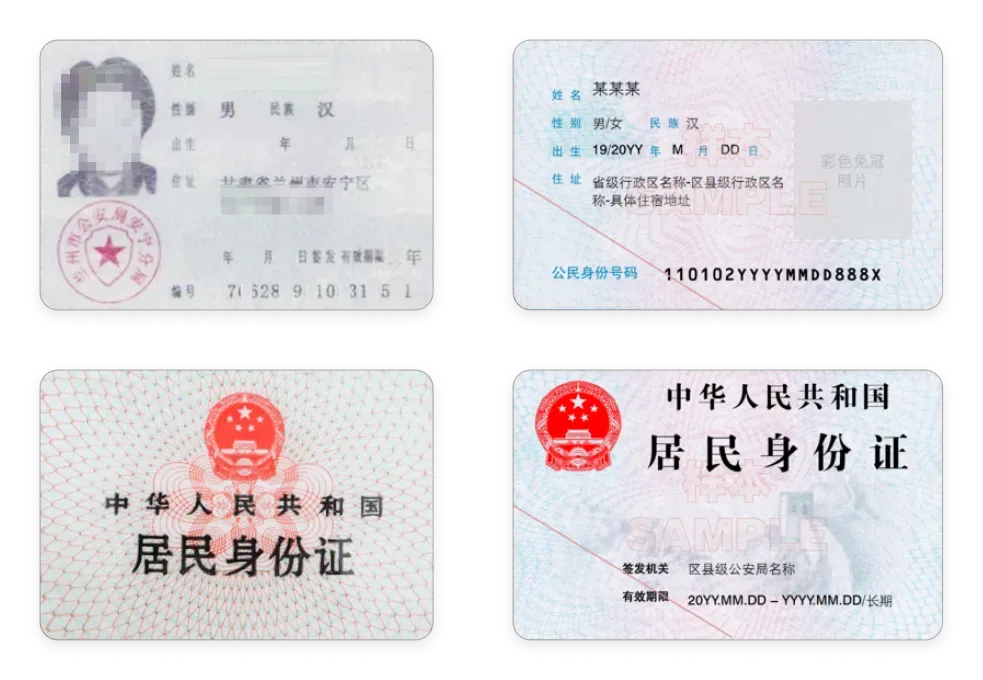
The Chinese Passport represents another challenge for verification systems. Designed with state-of-the-art technology, it includes multiple holographic layers, microprints, and an electronic chip that stores complete biometric information. Its security measures surpass international standards, with sensors that detect microscopic manipulations.
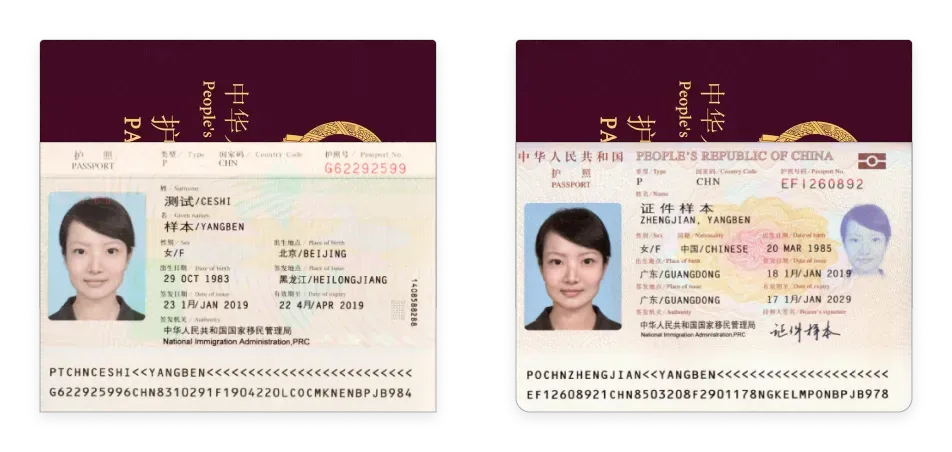
The Residence Permit for foreigners adds an additional layer of complexity. Each document varies according to immigration category, with specific designs for students, workers, or permanent residents. Verifying these documents requires not only advanced technology but also a deep knowledge of Chinese immigration legislation.
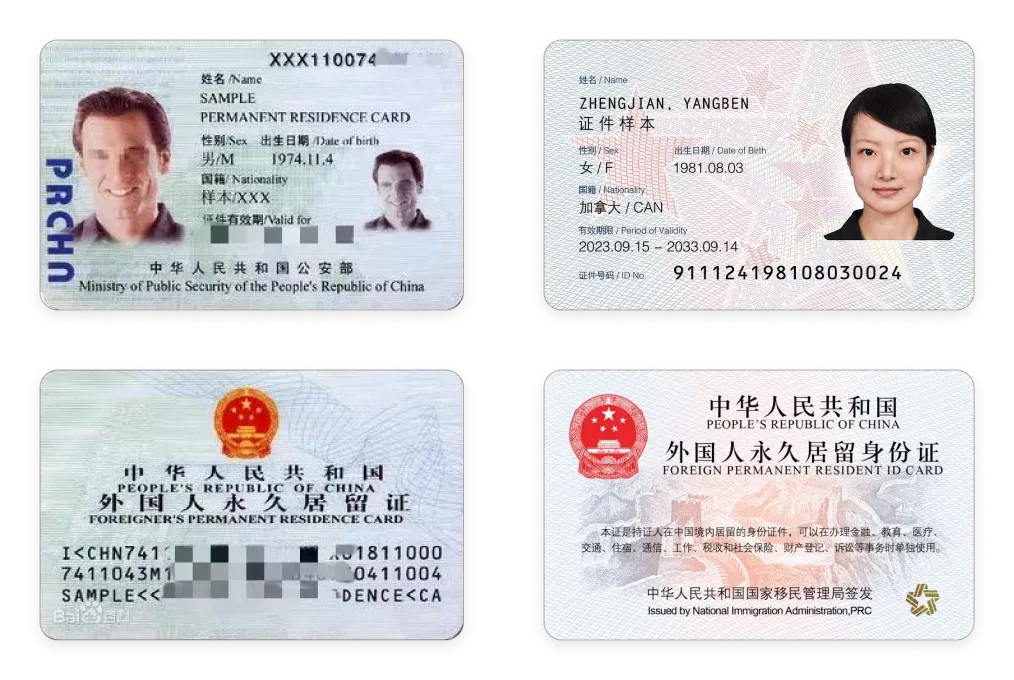
Didit: Transforming Identity Verification and KYC and AML Compliance in China
Didit presents the first completely free, unlimited, and forever identity verification solution in China, radically transforming regulatory compliance processes in the Chinese financial market. This disruptive innovation establishes a new paradigm in KYC and AML services, allowing companies of all sizes to access cutting-edge technologies without economic restrictions.
Our free KYC service integrates state-of-the-art artificial intelligence technologies, specifically designed to navigate China's regulatory complexity, offering solutions that overcome traditional identity verification challenges.
Document Verification: Unprecedented Precision
We use artificial intelligence algorithms capable of validating over 3,000 types of documents from more than 220 countries and territories. Our system detects inconsistencies and extracts information with unprecedented precision, adapting to China's complex documentary reality. Our machine learning models are trained to interpret documents in Mandarin, recognize specific security patterns, and cross-reference information in multiple governmental databases.
In this link, we explain the document verification process.
Facial Recognition: Advanced Authentication
We implement customized AI models that go beyond simple comparison. Our passive liveness test and advanced detection ensure that the person identifying themselves is indeed who they claim to be, overcoming the document fraud challenges characteristic of the Chinese market.
AML Screening (Optional): Real-Time Global Monitoring
We offer an optional AML Screening service that allows real-time checks against over 250 global data sets, covering more than a million entities on watch lists. This process enables companies to comply with the new Chinese Anti-Money Laundering Law requirements, providing a shield against international financial risks.
What Official Documentation Does Didit Verify in China?
In China, Didit verifies:
- National Identity Card (Shenfenzheng)
- Chinese Passport
- Residence Permit for Foreigners
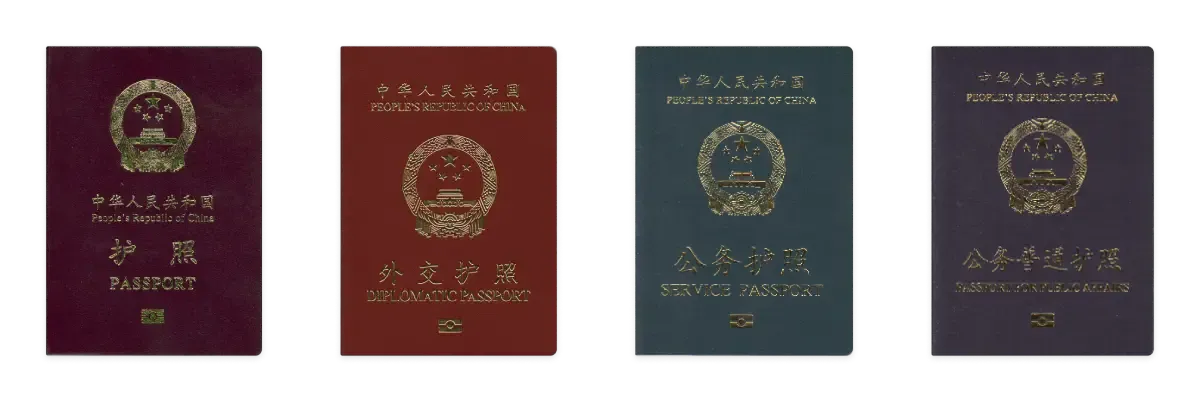
In summary, for the Chinese market, this means:
- Full compliance with the Personal Data Protection Law
- Reduction of operational costs by up to 90%
- KYC processes completed in less than 30 seconds.
Do you want to turn the challenges of identity verification in China into a competitive advantage?
